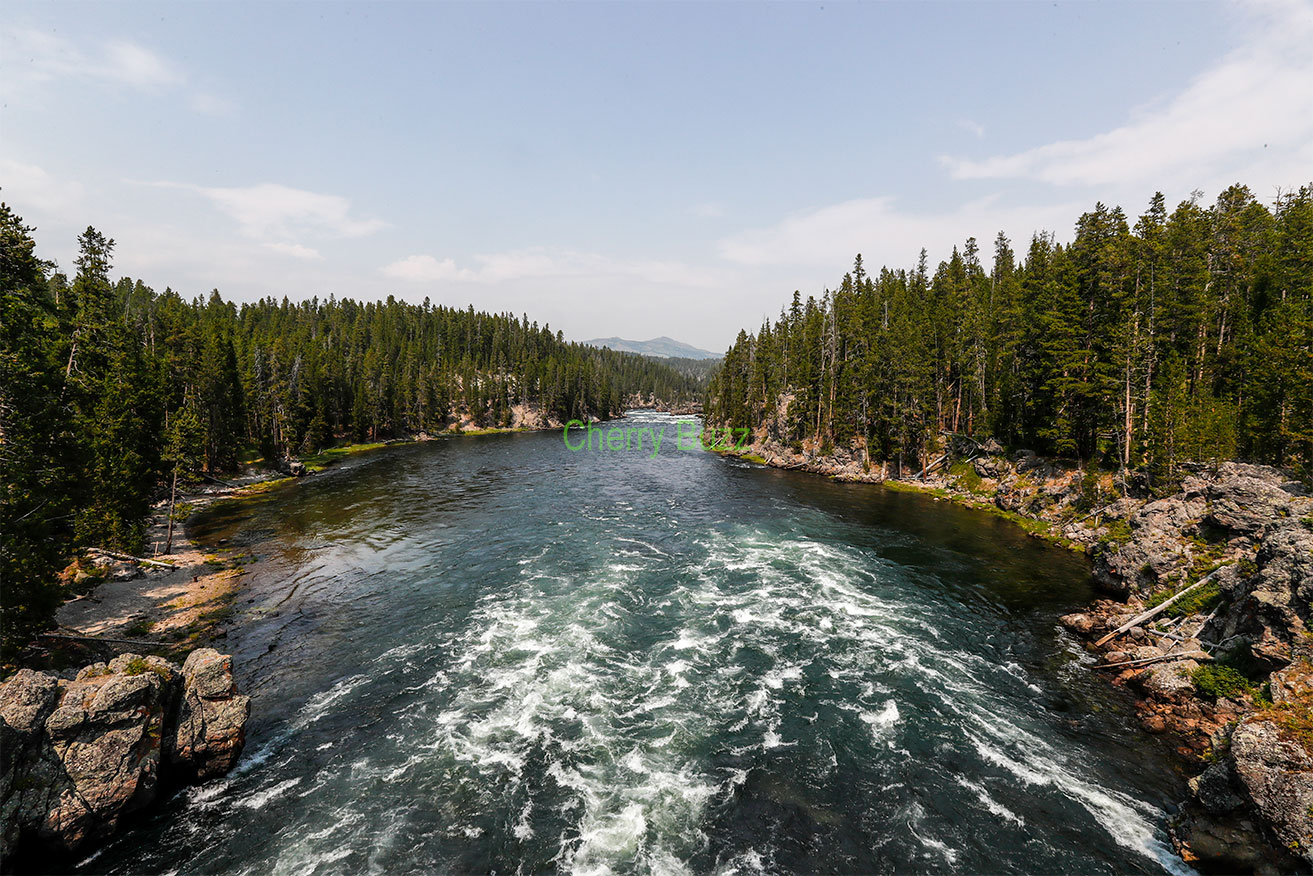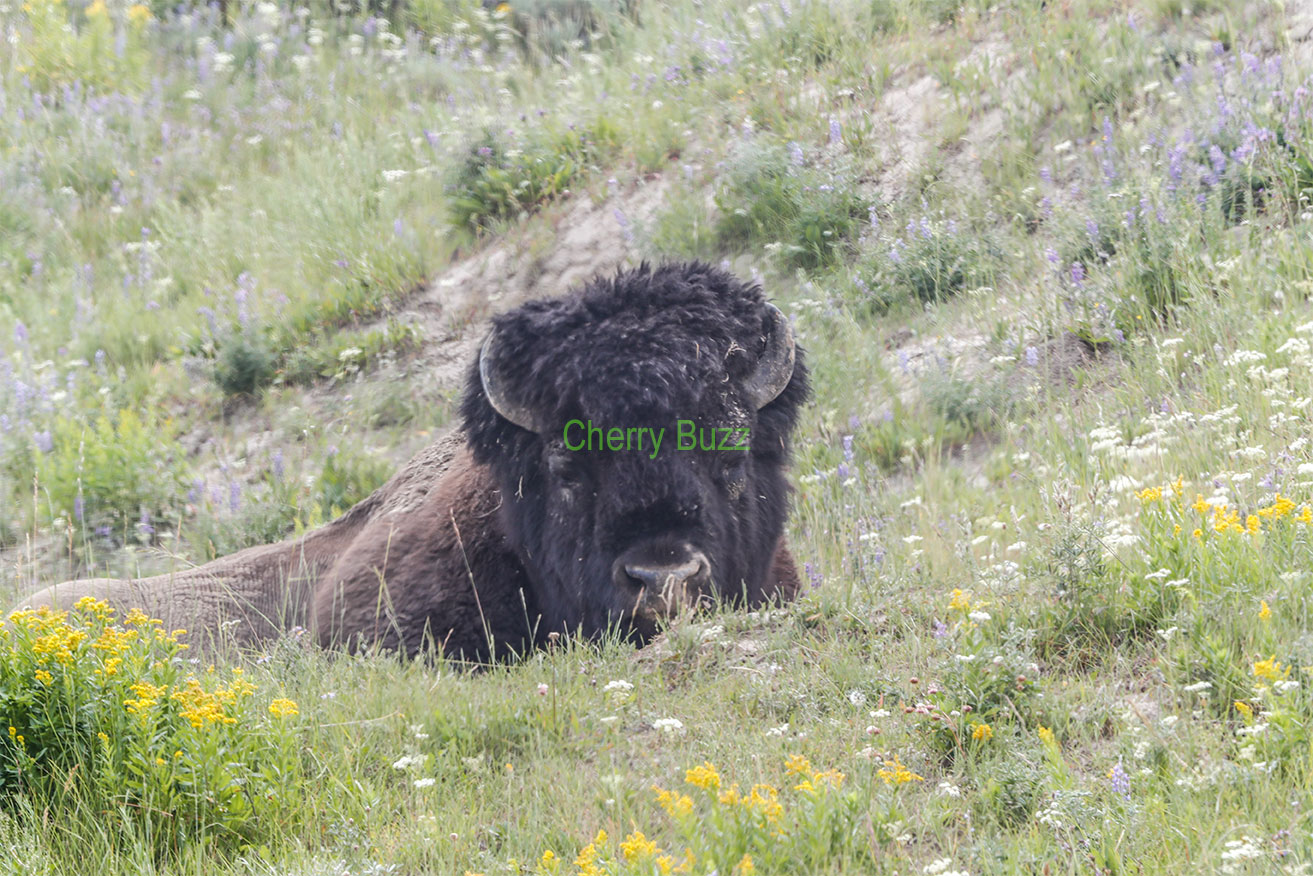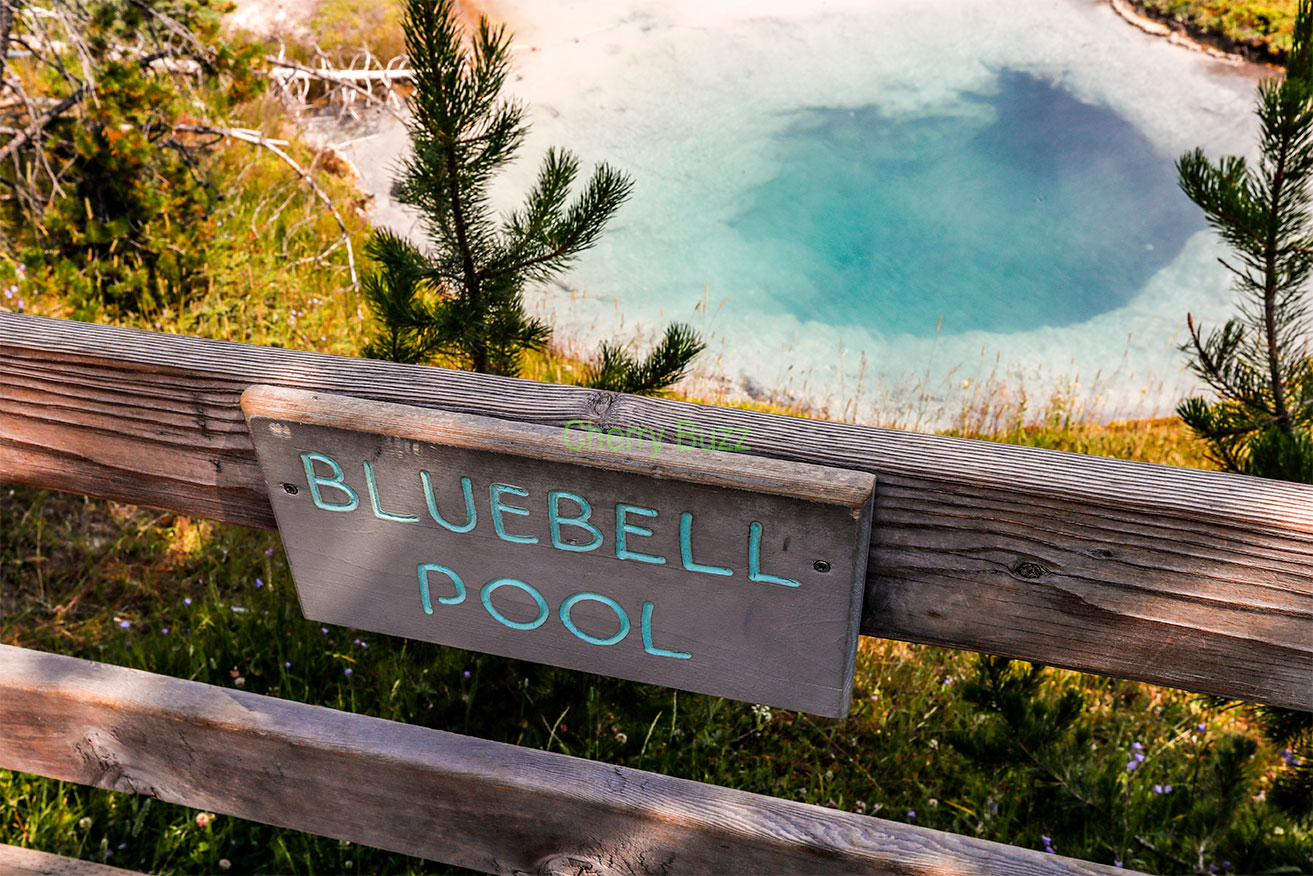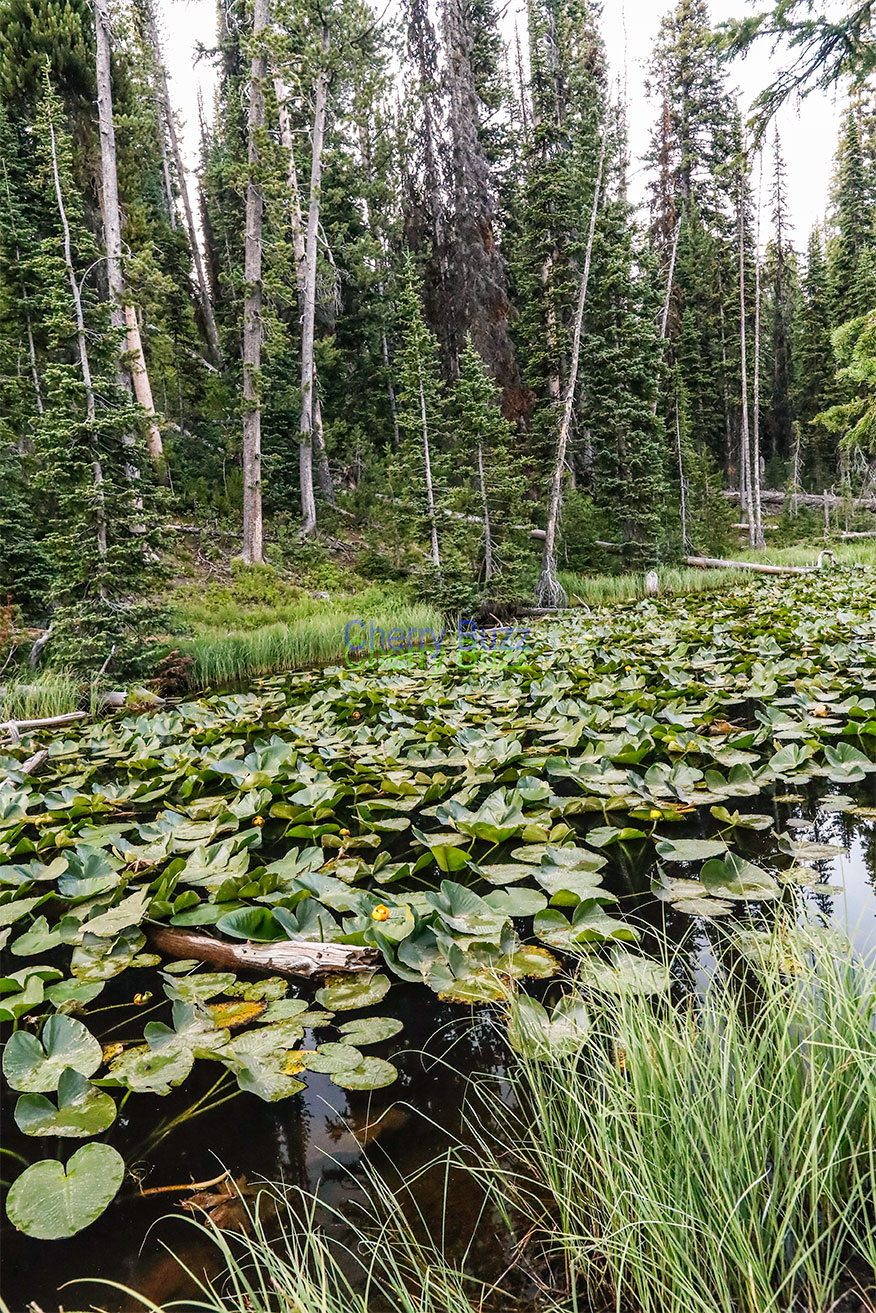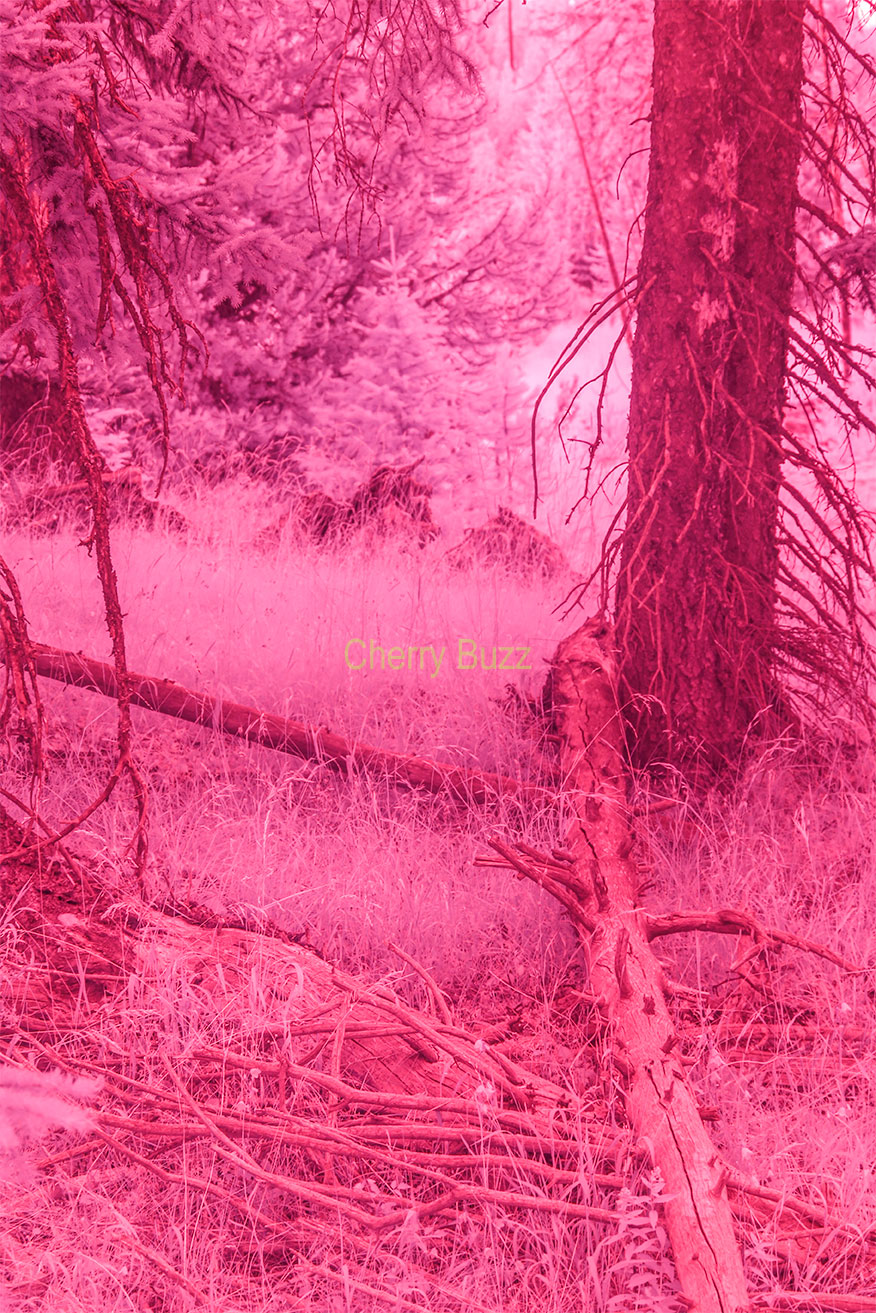Yellowstone National Park was the first of its kind to be established in the USA (1872). Many regard it as the first in the world but there is evidence that the Bogd Khan Mountain National Park in Mongolia, which may date as early as 1778, preceded it. Yellowstone was designated a UNESCO biosphere reserve in 1976 and a World Heritage site in 1978. [Kenneth Pletcher, Yellowstone National Park, Encyclopaedia Brittanica: https://www.brittanica.com/place/Yellowstone-National-Park] It occupies some 2.2 million acres in northwestern Wyoming and southwestern Montana. Yellowstone sits on a high plateau averaging 8,000 feet in elevation. The Park forms the core of the Greater Yellowstone Ecosystem (GYE) which comprises approximately 18 million acres of land in 3 states: Wyoming, Montana, and Idaho. “This area is the last intact contiguous temperate ecosystem in the world”. It still contains nearly all of the living organisms which teamed in pre-Columbian times, though perhaps not in the same numbers.
This unique ecosystem, with its biodiversity and geothermal features, is closely related to the geologic history of the Park. Glaciation, tectonic activity and volcanic eruptions have shaped the landscape and life within the Park for millions of years. After all it sits on top of the caldera of a supervolcano! In the last 2 million years, it is thought that 3 gigantic eruptions occurred which account for much of its geographic, geologic and demographic nature to-day. It is unique in the abundance of geothermal features: a whopping 10,000 in total. It has 500 active geysers which is more than 55% of the geysers in the whole world! This fact becomes all the more staggering when one finds out that Russia has only 200, New Zealand about 40, Chile 38 and Iceland 25. [Thermal Biology Institute, TBI, An Overview of Yellowstone Geologic History] By far the most spectacular of the Park’s geysers is the Steamboat, the world’s tallest, which is capable of forcing boiling water more than 300 feet into the air. Another equally famous geyser is Old Faithful, the most frequent, erupting approximately every 78 minutes.
Hundreds of species of mammals, birds, fish, reptiles and even microbes abound and are studied and documented. The vast forests and grasslands also include unique species of plants. Yellowstone is indeed the largest and most famous megafauna location in the US. Native Americans are known to have lived, hunted and fished in the region as far back as at least 11,000 years ago. They used the obsidian, found in the park in significant quantities, to make cutting tools and weapons. It is amusing, however, that after the official establishment of Yellowstone as a National Park and the appointment of its first superintendent, Nathaniel Langford, that that gentleman had to work for 5 years (1872-1877) without a salary! He was also never given any funding nor the support staff needed to carry out the job! It was after Langford quitted his post in 1877 that Congress finally agreed a salary for the post while also providing a minimal funding!.
Nevertheless even in those early days, Yellowstone National Park had numerous lovers who extolled its beauty and charm. Thus in 1898, the naturalist, John Muir, described the Park as follows: “However orderly your excursions or aimless, again and again amid the calmest, stillest scenery you will be brought to a standstill hushed and awe-stricken before phenomena wholly new to you. Boiling springs and huge deep pools of purest green and azure water, thousands of them, are splashing and heaving in these high, cool mountains as if a fierce furnace fire were burning beneath each one of them; and a hundred geysers, white torrents of boiling water and steam, like inverted waterfalls, are ever and anon rushing out of the hot, black underworld. Such praise helped increase the visitors over the years to the extent that, from 1995 to 2003 Yellowstone National Park was placed on the List of World Heritage in Danger due to the effects of tourism, infection of wildlife, and issues with invasive species.
Another characteristic of this marvelous region is its seismic activity. In fact the Park’s features are the result of the supervolcano underneath it coupled with tectonic movement. Earthquakes are so frequent that many might have, in the past, gone unnoticed. The University of Utah’s seismograph stations detected more than 3,200 earthquakes in the Park in 2010 alone!.
The frequent earthquakes in the Park are sometimes referred to as earthquake swarms because they happen so close upon each other. Thus, for example, in January of that same year, 2010, over 250 earthquakes occurred in a two-day period! The Yellowstone Caldera is the largest volcanic system in North America. It gained the name ‘supervolcano’ because the caldera was formed by 3 exceptionally large and cataclysmic eruptions, the last of which took place more than 600,000 years ago. At present, the caldera is thought to be a single connected chamber about 37 miles (60 km) long, 18 miles (29 km) wide, and 3 to 7 miles (5 to 12 km) deep!.
Yellowstone National Park has one of the world’s largest petrified forests. In such forests, trees which were long ago buried by ash and soil have changed from wood to mineral materials. And as if all this is not enough to tempt visitors, the Park boasts 290 waterfalls, the lowest being at 15 feet, the highest, which is the Lower Falls of the Yellowstone River, at 308 feet (94 m). There are 3 deep canyons in the park, cut through the volcanic tuff of the plateau by rivers. Because the seismic activity is none stop and changes do occur all the time, a partnership was started in May 2001 joining the U. S. Geological Survey, the Yellowstone National Park Service and the University of Utah. The goal of the partnership was long-term monitoring of this geologically ever active region as well as the assessment of hazards and the spreading of accurate information thereof. This is also the time the Yellowstone Volcano Observatory was set up to keep an eye on the Park’s dynamic activity. While most do not think an eruption is likely in the near future, it is reassuring to know that everything is being monitored.
Another common hazard in parks and moorlands is wildfire & Yellowstone National Park has had a fair share. But it is pertinent to note that trees & plants indigenous to Yellowstone have adapted to that in numerous way. Thus, for instance Douglas-fir have a thick bark which protects the inner section of the tree from most fires. For some species of trees, notably lodgepole pines, wildfires help clear out dead wood while dispersing the seeds. The National Park Service estimates that in natural conditions, grasslands in Yellowstone burned on average every 20 to 25 years while forests in the park would experience fire about every 300 years. Because of the variation in altitude, different parts of Yellowstone National Park have different temperatures with the lower altitudes being warmer all year-round than the higher. The summer months see millions of visitors with July being the busiest month of the year but guided snowmobile and snow coach tours take place in winter, too. There are 9 visitor centers and museums & a dozen campgrounds are available with more than 2,000 campsites. Hunting is not allowed in Yellowstone National Park although it is permitted in the surrounding national forests during open season. Fishing is allowed but a Yellowstone Park fishing license is required & all indigenous fish species are catch and release only.
There are 5 entrances to Yellowstone National Park, 2 in Montana (Gardiner and Cooke City), 2 in Wyoming (Cody and Jackson Hole) and 1 in Idaho (Island Park). Each of the towns closest to entrances has its attractions and stunning beauty; your choice of entrance depends partly on where you are driving from and partly on the main magnet drawing you to the Park. If, for instance, you are drawn there by a desire to see Mammoth Hot Springs then Gardiner, in Montana, is your best entrance. If it is wildlife you are after then Cooke City is the town for you. If you are after Yellowstone Lake with its numerous geothermal features then Cody, in Wyoming, is the city for you. It is the city founded by Buffalo Bill Cody himself; it celebrates its old western heritage with daily summer rodeos and boasts a fantastic Buffalo Bill Center. But if your intention is to see two national parks in one visit, Grand Teton National Park and Yellowstone National Park, then Jackson , Wyoming, is the town for you. Jackson itself is an amazing mountain town which blends beautifully the Old West with modern glamour. It is a very popular destination both in winter, for all types of winter sports, and summer and its friendly people cater for all kinds of visitors with a full range of hotels, guest ranched, fantastic dining and lots of outdoor recreation. The Town Square has the first of Jackson’s famous arches made from the naturally shed elk antlers. The whole family can have lots of fun in Jackson which, besides the usual gift shops and ice-cream parlours, is actually a hub for music, theatre, and art activities. Its National Museum of Wildlife Art has a unique collection of paintings and sculptures. Town Square also has another unique feature: the iconic Million Dollar Cowboy Bar the interior of which is filled with cowboy memorabilia and historic photos etc.
Yellowstone was established as the world’s first national park in 1872 but continued to attract visitors every month of the year. We visited Yellowstone National Park in summer which is the busiest season of the year. In summer, all the roads are open and the whole large park can be navigated easily depending on the NPS Yellowstone National Park app (from the Apple App Store) and local maps/GPS.
For more information, please see the following links:
https://nps.gov/yell/learn/nature/geology.htm
https://www.frommers.com/destinations/yellowstone-national-park/landscape
https://www.yellowstonehikingguides.com
Patry, Marc et.al. (March 11-13, 2003) “The State of Conservation of World Heritage Forests”. Proceedings of the 2nd World Heritage Forest Meeting. Archived. from the original on January 26, 2012.
https://www.audleytravel.com/usa/places-to-go/yellowstone.
https://en.m.wilipedia.org/wiki/Yellowstone_National_Park.
Muir, John (April, 1898). “The Yellowstone National Park”. The Atlantic. Archived from the original on March 12, 2017.
https://traveltips.usatiday.com/towns-bearest-yellowstone-park-54182.html
https://www.yellowstonepark.com/road-trips/hackson-hole-wy
https://www.yellowstonepark.com/park/yellowstone-park-entrances


